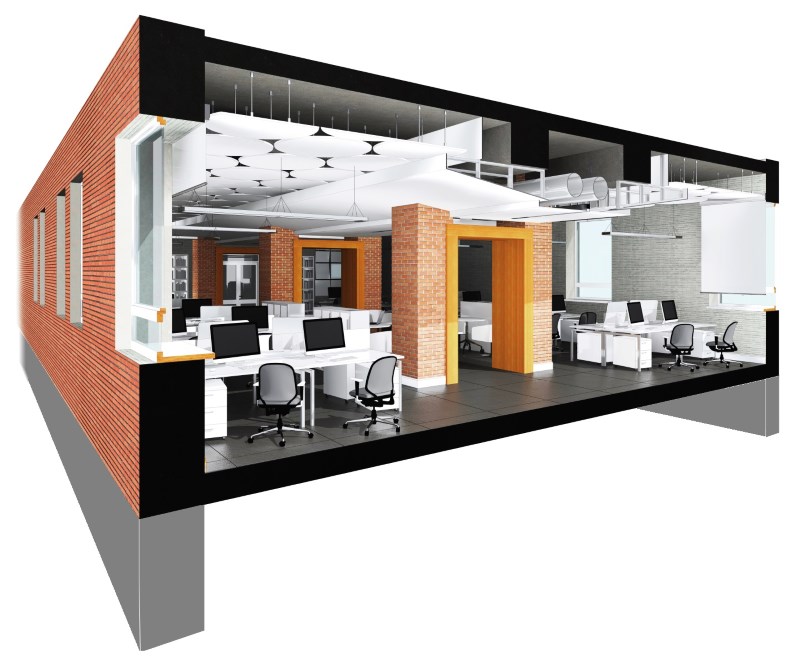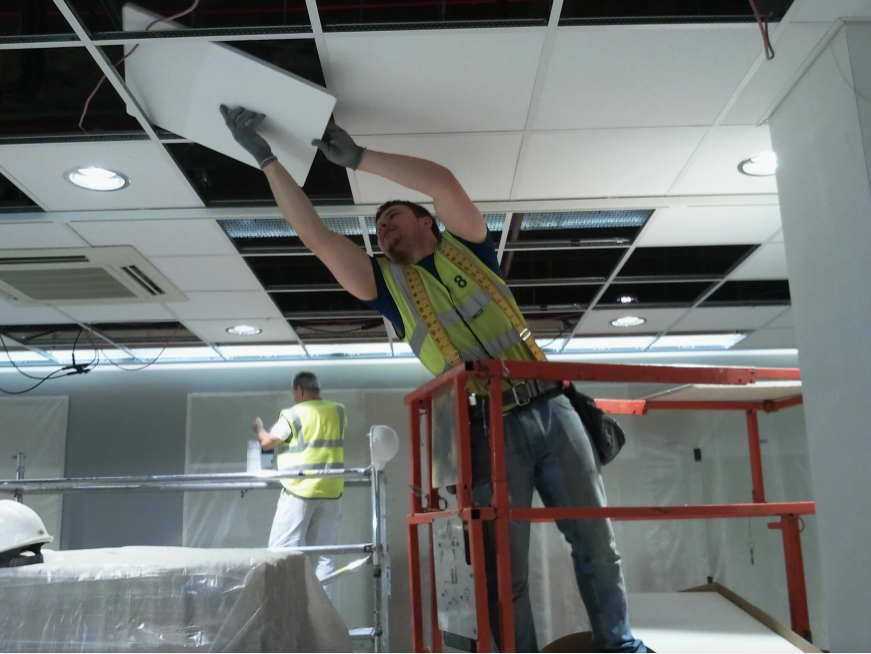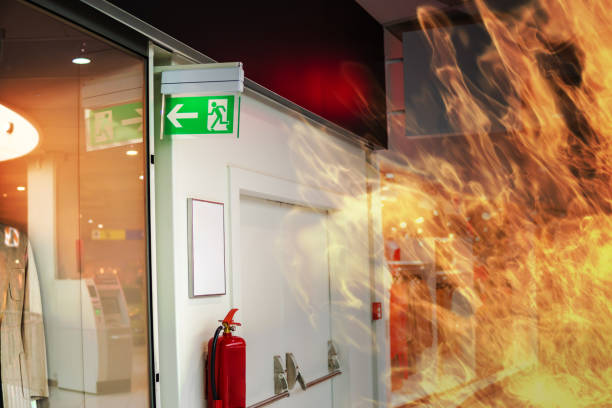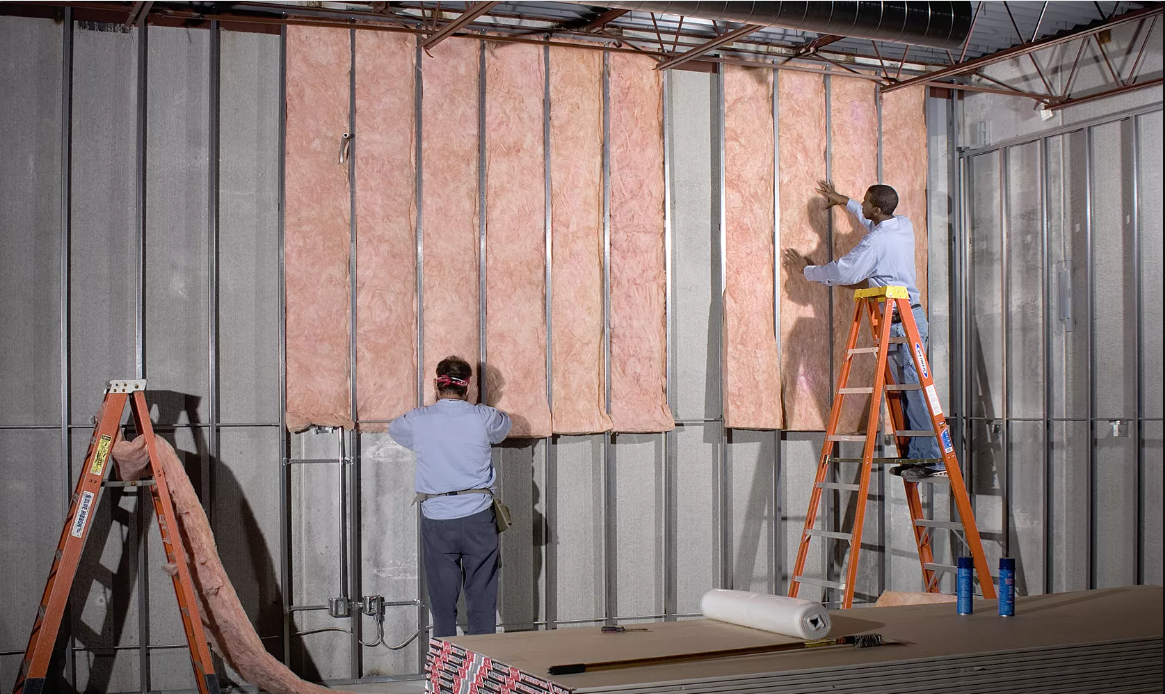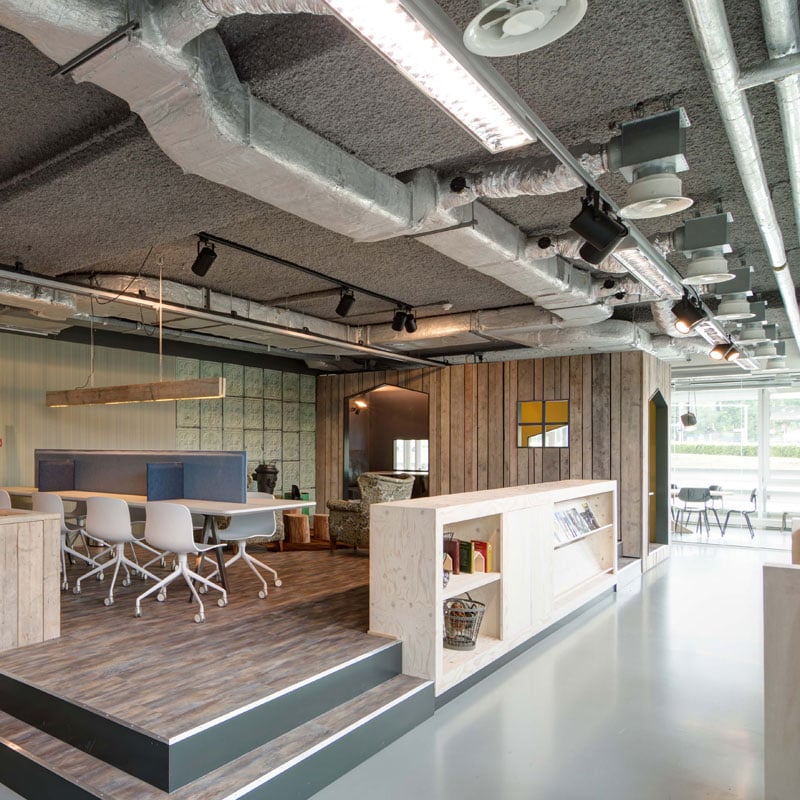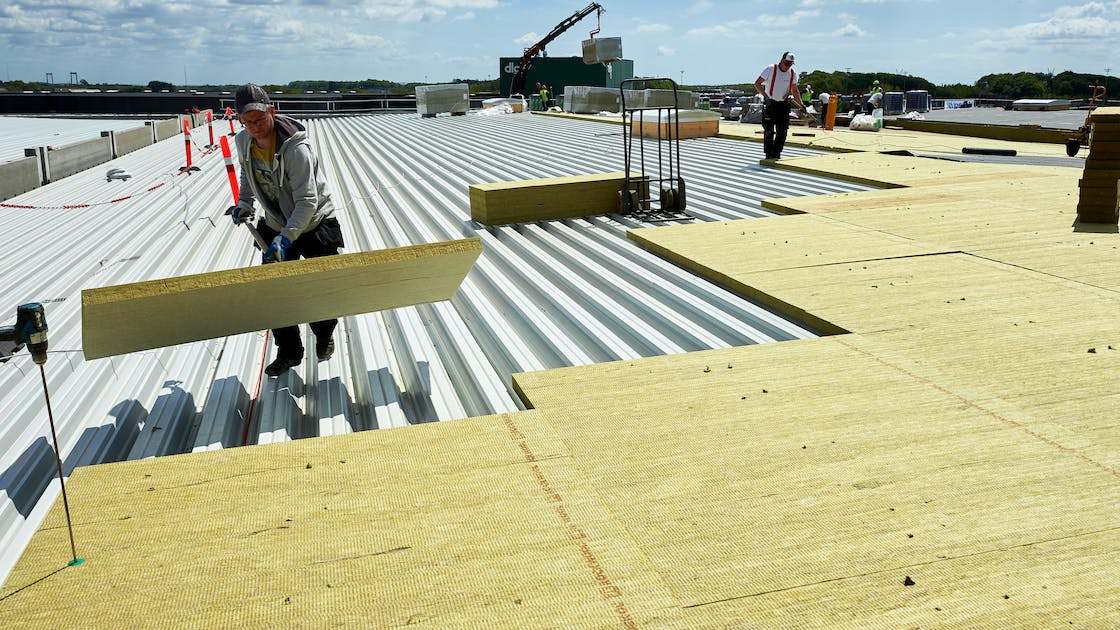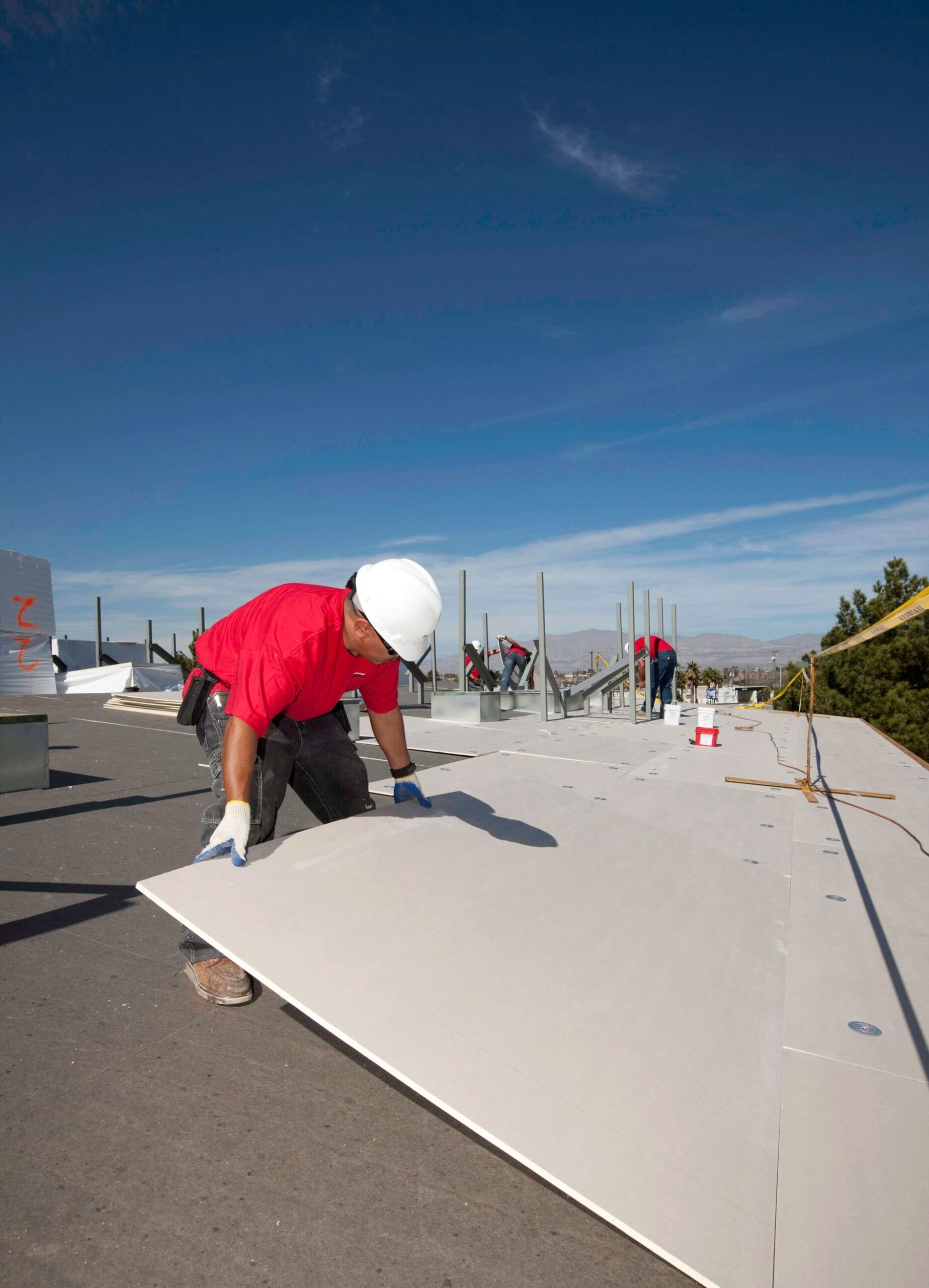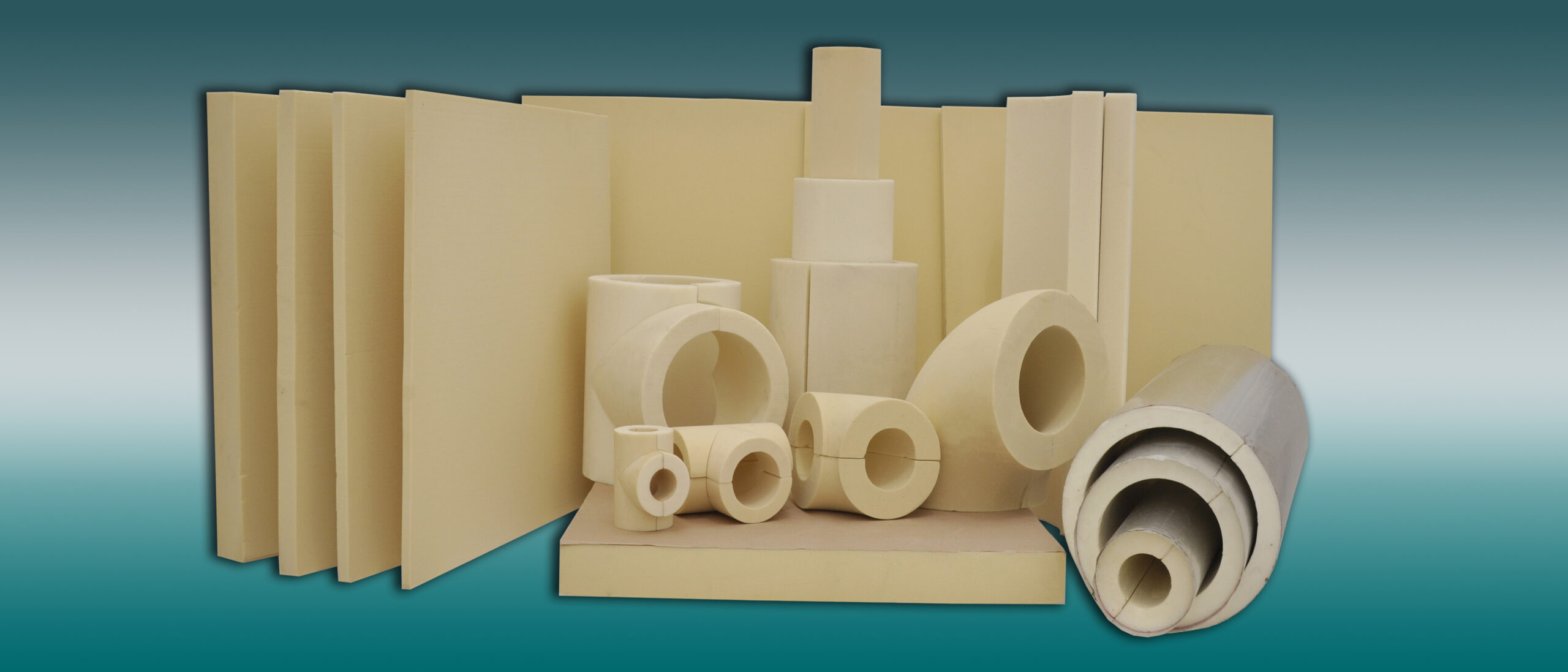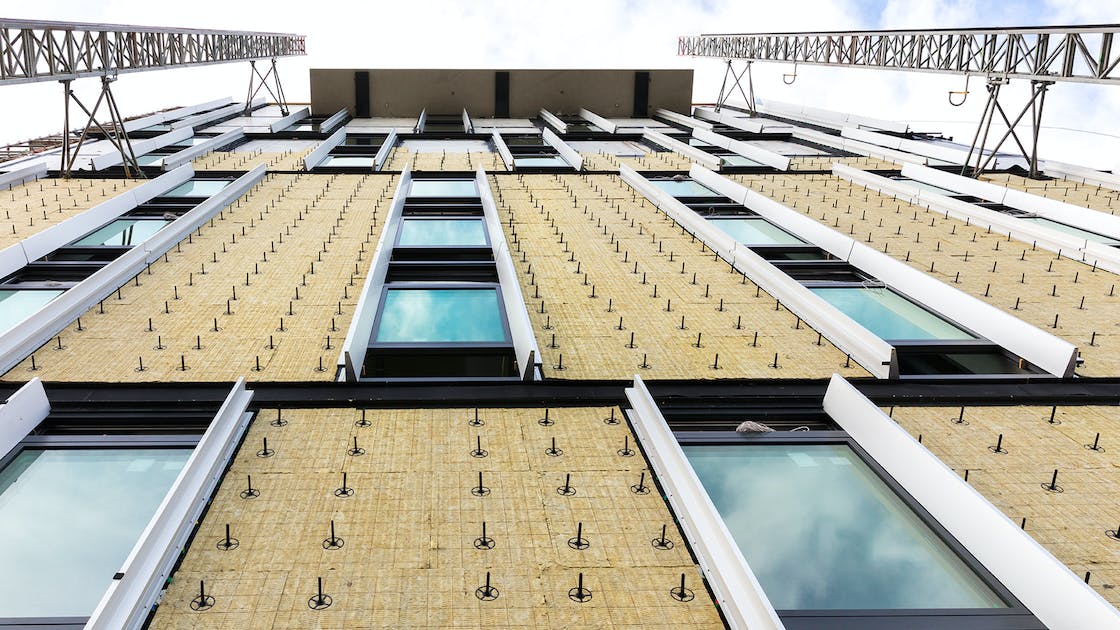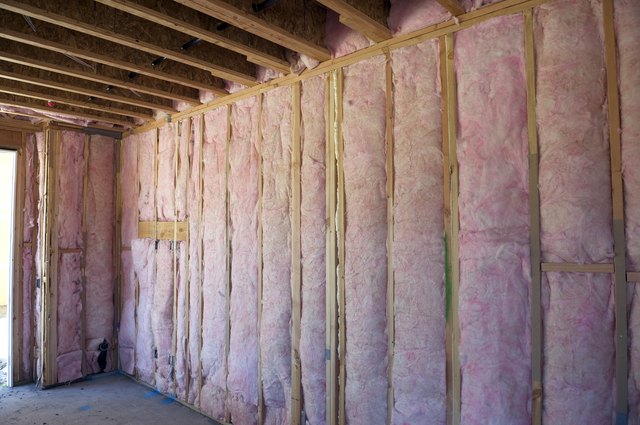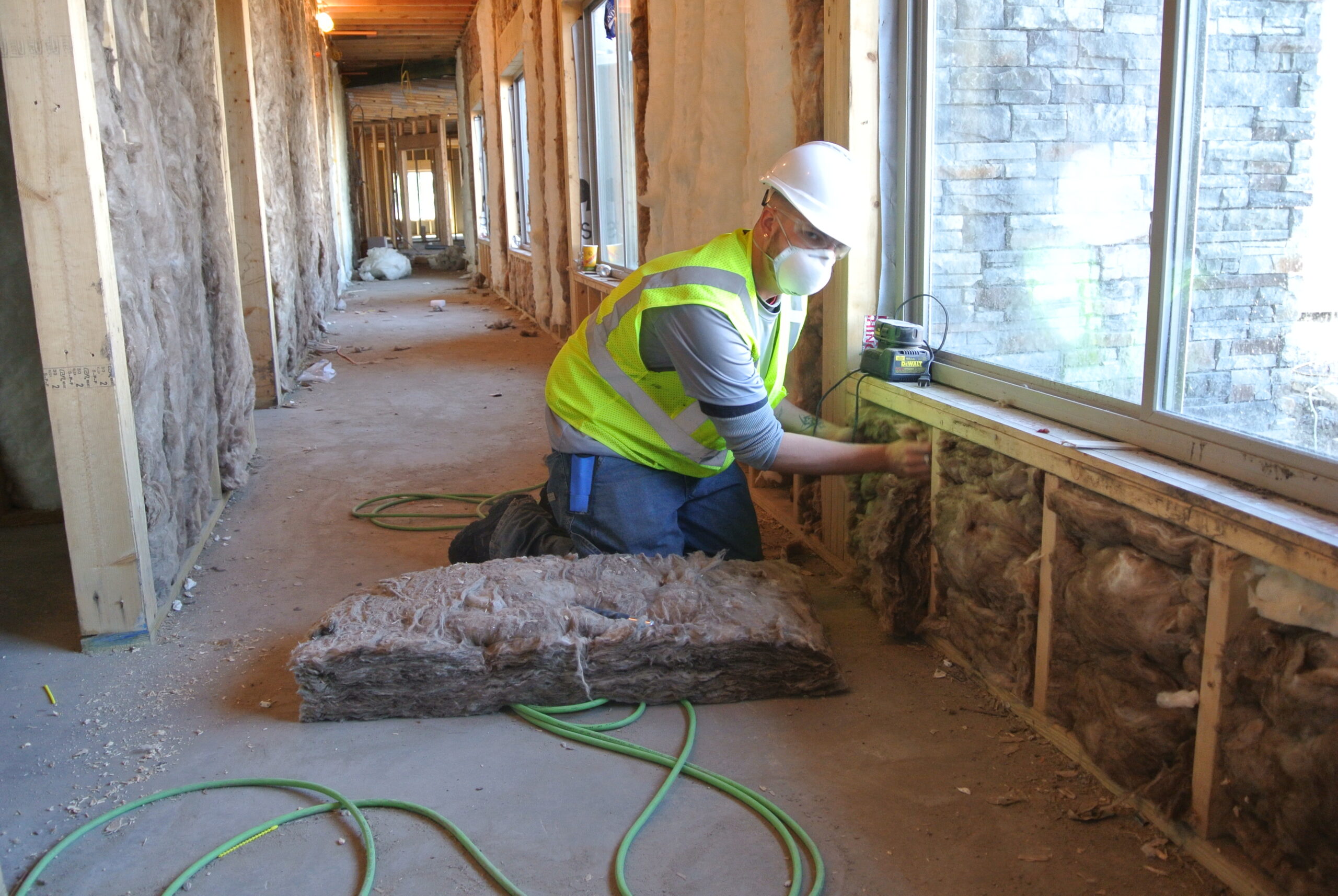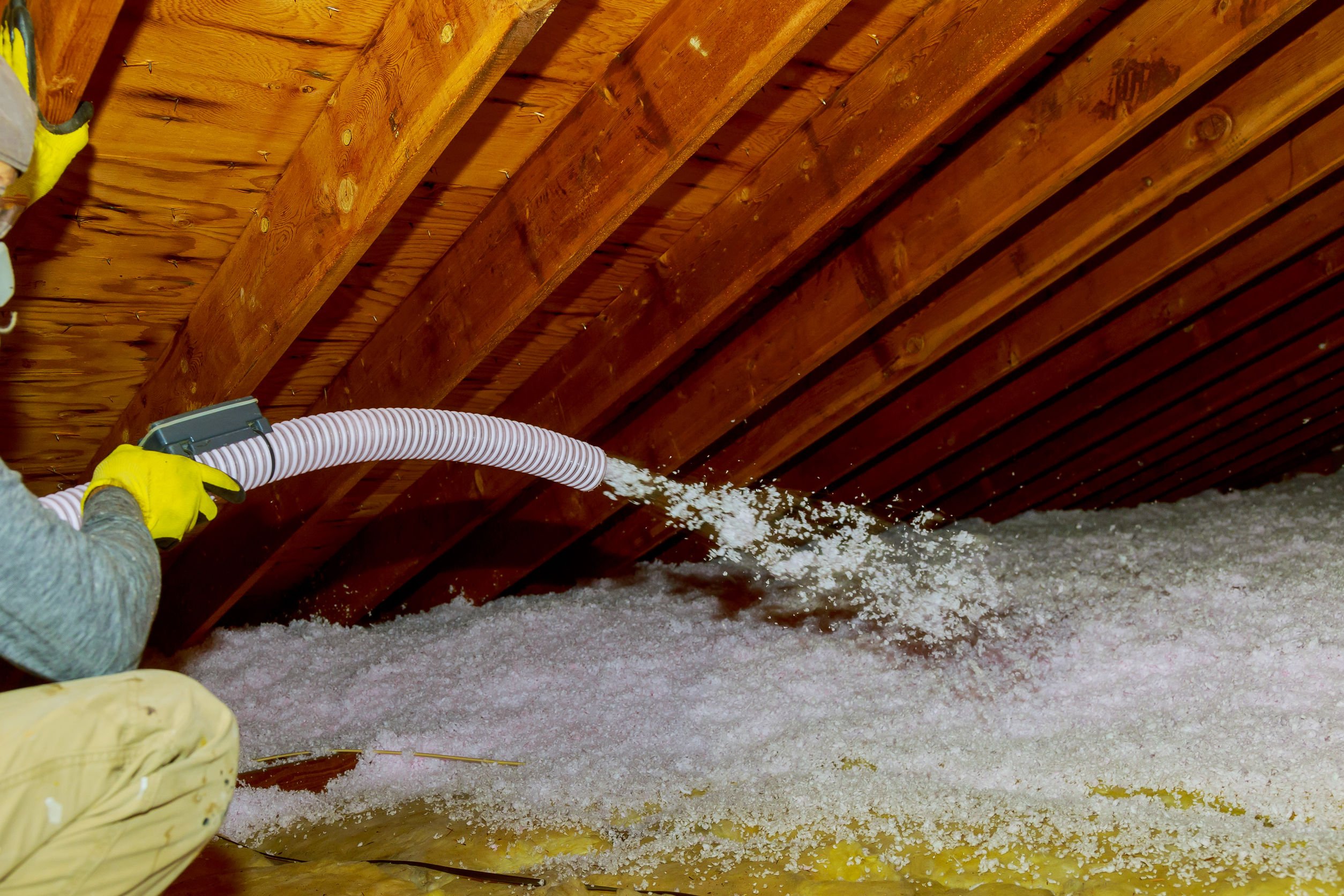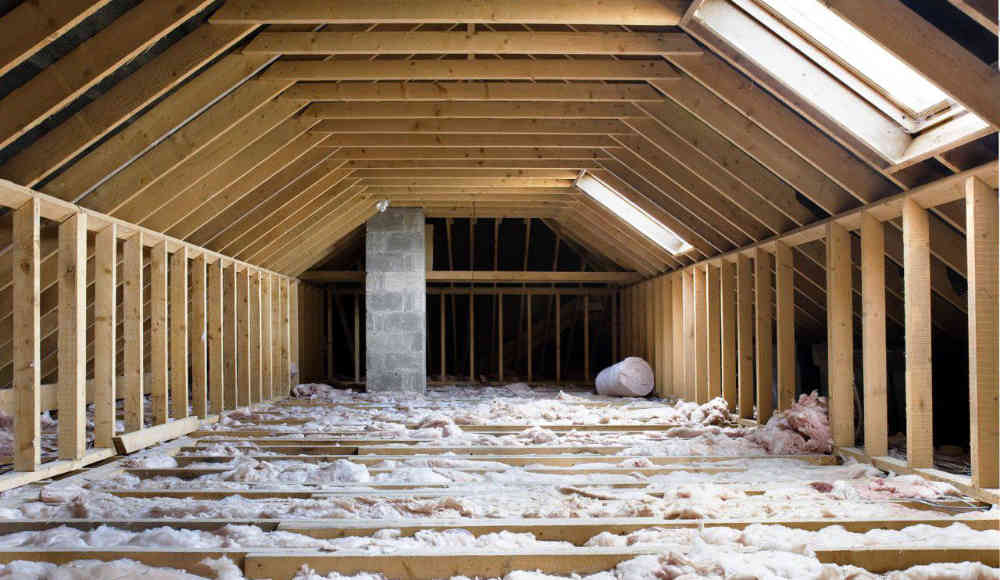Ⅰ. Why commercial building insulation is important?
Insulation is a common but extremely important component of any commercial building’s structure. The following is a brief introduction to insulation for commercial buildings and why it’s vital that commercial structures be insulated properly.
The role of insulation is to prevent the migration of heat from warmer spaces to cooler ones. This is a very simple concept that affects both commercial and residential buildings in several significant ways.
Helps maintain a comfortable environment: Commercial building insulation is essential to creating a comfortable environment. By using high-quality insulation materials, heat transfer between the inside and outside of the building can be reduced or eliminated. This ensures that the indoor temperature remains at the preferred level year-round. Furthermore, commercial building insulation materials are effective in reducing noise transmission and creating a quiet environment. This can enhance productivity and well-being, as excessive and continuous noise can have negative impacts. Therefore, using commercial building insulation materials is essential to creating a comfortable and productive environment.
Reduces heating and cooling costs: To keep up with temperature variations in a poorly insulated structure, your furnace, air conditioner, heat pump, or boiler will have to work overtime. Your HVAC equipment will have to provide extra cooling or heating to compensate for the loss or addition of heat, depending on the season. Not only will you lose the energy you’ve already paid for to create heating or cooling, but you’ll also have to pay for more energy to make up for the loss. This will lead to a significant waste of energy and money.
Decreases wear on HVAC systems: As HVAC systems work overtime to compensate for the effects of limited insulation, they will experience more wear and tear than they would under better circumstances. This will increase the chances of a system malfunction or breakdown and the need for a costly repair. It will also shorten the functional life of the equipment, making it likely that a complete replacement will be necessary sooner than normal. The effectiveness of insulation is determined by its R-value, which is a measure of how well it resists the flow of heat. Different areas of the country require different R-values to achieve minimum insulation levels. Higher R-values mean more effective insulation.
Provides Fire Protection:A fire can start in any part of a building. But insulating your property can help contain the fire and prevent it from spreading, limiting structural damage and potentially preventing fire-related injuries. To provide extra protection to your building occupants, installing fire-resistant insulation is an excellent option.
Ⅱ. What insulation is needed for commercial buildings?
Generally speaking, all commercial properties require insulation materials. Particularly, some businesses in select industries require proper commercial insulation materials to ensure productivity and safety. More specifically, the areas in need of commercial building insulation materials are the following:
Barns and other agricultural buildings: Today’s farming processes require efficient buildings where temperature and humidity can be controlled. The right amount of insulation can help. From the almond farms that populate the Sacramento area to orchard sheds, cattle barns, and more, most agricultural buildings need commercial insulation.
Warehouses: Warehouses, distribution centers, and other industrial buildings are nearly always insulated for better thermal efficiency, soundproofing, and more. These metal structures often require vinyl insulation (used for many commercial applications).
Offices: Metal buildings, while strong and sturdy, can suffer from long-term structural damage if not properly insulated. Commercial building insulation materials are essential for preserving the lifespan of metal buildings as they add insulation value, manage interior climate control, reduce heat loss, increase sound absorption, decrease condensation, and improve air barriers with various facings. In addition, the use of commercial building insulation materials in metal buildings helps to reduce overhead costs, improve energy efficiency, and lessen noise from both outside and between different rooms and levels inside.
Apart from the commercial buildings mentioned above, many other buildings also require commercial buildings insulation of high quality, such as hospitals, retail centers, hotels, restaurants, and more.
In summary, there are three main types of commercial building insulation: roof insulation, wall insulation, and floor insulation. The most popular types are roof insulation and wall insulation.
1. Types of roof insulation
Talking about roof insulation, there’s a great variety: in terms of the forms of roofs, there are flat roof insulation and pitched roof insulation; in terms of the types of roofing materials, there are metal roof systems, concrete roof systems, and membrane roof systems. In regard to commercial building insulation, we mainly talk about metal roof insulation and concrete roof insulation.
Mineral wool insulation
The mineral wool board is an essential tool for flat roofs to increase energy efficiency, reduce fuel costs, and protect the building from any outdoor climate. ECOIN’s mineral woo board is characterized by high compressive strength, showing a high point load. These features meet the increasing demand for functional roof spaces: the mineral wool board can help to enrich the space while also providing great insulation. It is perfect for all types of buildings, from high-rise apartments and residential designs to industrial units, large commercial facilities, schools, and hospitals.
ECOIN produces rockwool roof insulation products for both metal roof systems and concrete roof systems. For more information, please click: Ecoin Rockwool Roof Insulation
PIR foam insulation
Polyisocyanurate, more commonly referred to as polyiso insulation or ISO, is a closed-cell rigid foam board used in more than 70% of commercial roof construction.
This PIR foam insulation material is produced through the reaction of isocyanate and polyether. It is a thermoset, closed-cell foam that is an optimal insulation solution for low-slope roofs. It can also be used as a roofing cover board and in building envelope applications. Polyiso products are a reliable alternative to other fibrous and rigid foam plastic insulation, as they can offer the following benefits:
Wide range of service temperature– PIR foam offers a broad temperature range for use, from -196℃ to +120℃, making it an ideal material for cryogenic insulation.
Moisture resistance- The closed-cell structure of PIR foam prevents it from absorbing moisture, making it highly resistant to humidity.
Compressive strength– PIR foam has a high compressive strength, allowing it to withstand foot traffic during routine maintenance.
High compatibility with various adhesives– PIR foam is compatible with most construction adhesives, roof and wall coverings, and attachment systems.
ECOIN offers different types of PIR foam insulation products for various applications and our main products are PIR foam boards, PIR foam elbows, and PIR foam pipes.
For more information, please click: Ecoin Pir Foam Insuation
Both the mineral wool board and the PIR foam board are suitable for roof insulation. Each of them has its own benefits and advantages:
Thermal Performance and Weight- The thermal performance of mineral wool boards and PIR foam are different. Mineral wool boards have a relatively low R-value of 3.8 and are often used in walls due to their weight: the mineral wool board is 4.5 times heavier than the PIR foam board and requires twice as many boards to be installed, which can increase project costs. PIR foam has a higher R-value per inch, ranging from R-5.6 to R-8 per inch, which is 45% more than mineral wool insulation. However, the R-value of PIR foam can drop over time as gas escapes, but foil and plastic facings can help stabilize that number.
Noise reduction– The mineral wool board is a superior soundproofing material compared to PIR foam, as it has a higher density and a greater ability to absorb sound waves. This material is made from natural materials such as basalt, slag, and recycled glass, which are melted and spun into fibers and then compressed into a mat or blanket for insulation. This increased density offers more effective sound-blocking capabilities than PIR foam, which is made of polyurethane and is less dense. Thus, a mineral wool board is an optimal choice for soundproofing.
Fire Protection- Thanks to its flame-retardant chemicals, mineral wool is highly fireproof, which makes it a popular choice for commercial buildings where fire performance is the most critical factor. Mineral wool is composed of noncombustible batts, or precut sections of insulation made up of inorganic fibers that have an impressive melting point of more than 1,000℃.
Compressive Strength- Mineral wool is a superior soundproofing material compared to PIR foam due to its higher density and greater ability to absorb sound waves. Mineral wool is made from natural materials such as basalt, slag, and recycled glass, which are melted and spun into fibers. These fibers are then compressed into a mat or blanket that is used for insulation. The high density of mineral wool makes it more effective at blocking sound waves than PIR foam, which is made from polyurethane and is less dense.
2. Types of wall insulation
Wall insulation in a commercial building is used to reduce the amount of heat transfer between the interior and exterior walls of the building. It is typically made from materials such as fiberglass, cellulose, or foam and is installed in the cavities of walls or on the outside of the wall as an extra layer of protection against heat loss.
The most popular products for wall insulation are fiberglass board and fiberglass insulation roll.
Fiberglass boards
One of the most popular options for commercial buildings, fiberglass boards are made by stacking together many layers of fiberglass and compressing them into a board shape. These boards are installed in wall cavities and provide a decent level of thermal performance.
Fiberglass insulation rolls
Fiberglass insulation roll is a perfect choice for wall insulation in unfinished walls, floors, and ceilings. It comes in different widths that allow the roll to fit between the framing members and provide the needed thermal insulation. Fiberglass insulation roll also has the advantage of being UV stable, meaning it does not shrink and lose thermal performance over time. The R-value of fiberglass insulation roll in commercial buildings is usually R-13, making it an economical choice for insulation. It does not provide much structural support, so installation can be more difficult than other options, but it is still a viable option for many insulation needs.
III. How to choose the right commercial building insulation material?
1. Types of commercial building insulation materials
Before you start, it is important to know that different types of commercial building insulation materials are available. These vary in form and materials. Each type of insulation material has its own unique properties and benefits, so it is important to understand the differences between them in order to make the best choice for your commercial building insulation.
Batt insulation
Batt insulation is the most common type of heat barrier used. It’s made from a flexible material that can be cut into irregular shapes and pushed into wall spaces. Batt traps air between its fibers and prevents heat loss, making it a very useful barrier for both interior and exterior walls. The low cost makes it an efficient choice for all-over coverage and large areas away from direct sunlight.
Blown-in insulation
Blown-in, or “loose-fill,” insulation consists of fiberglass material, like batt insulation. Blown-In needs to be loaded into a machine hopper and blown into gaps by a professional. The main advantage of blown-in methods is it has no initial form and can take on a form-fitting shape in small spaces and irregular areas.
Spray foam insulation
Spray foam is very similar to blown-in insulation, but is prepared as a liquid or foam that rapidly fills gaps, cracks, and hard-to-reach crevices. This liquid insulation may be applied with a small can of spray foam to repair damages.
As a professional insulator supplier, ECOIN offers you various options to meet your commercial building insulation requirements: the most popular types are polyiso roof insulation products (also known as PIR foam), mineral wool boards, and fiberglass insulation rolls.
2. Factors to consider when choosing commercial building insulation materials
When selecting the right insulation for your commercial building, there are two key factors to consider: the purpose of your building and its own features.
Purpose of your commercial building
The main purposes of a commercial building could be agricultural, industrial, and corporate. The use of insulation in these places can be beneficial in a variety of ways, such as reducing energy costs, improving productivity, and providing a comfortable working environment.
Features of your commercial building
Besides, there are other factors to consider; such as the climate, the construction of the building, and its location. For instance, colder climates often require more insulation than warmer ones, while buildings with attics may need additional insulation in the attic space. An experienced contractor can take all these elements into account and select the best insulation option for the building.

